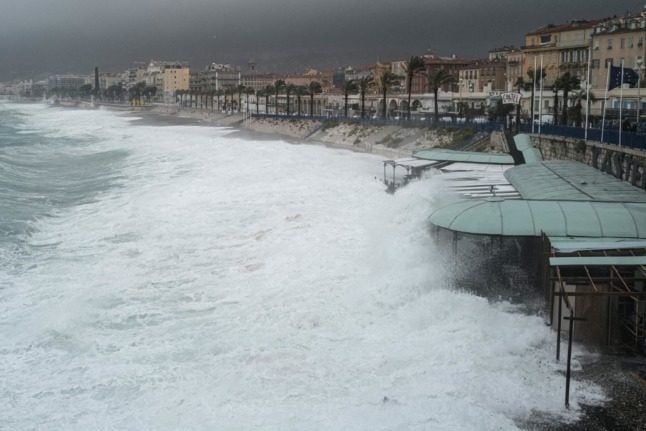ROADS
Ice and floods hit Swedes on drive home
At least two people have been killed and several others hospitalised in car accidents across Sweden as heavy rain, flooding, snow and ice hit the country on a day when many were returning home from Christmas.
Published: 27 December 2015 15:50 CET

A police car is towed to land after being stuck in deep water on a road outside Lund. Photo: Johan Nilsson/TT
In Östergötland, south of Stockholm, 13 traffic accidents took place just between 11:30am and 14:30am on Sunday, as a sudden drop in temperatures coated the E4 motorway in sheets of black ice.
“Its a total ice rink here,” Swedish TV presenter Peter Siepen told Expressen after seeing an accident from his tourbus on the way to Växjö. “I saw from the bus how the car had been flipped over onto its roof.”
Martin Berggren with the Östergötland police said that the accidents were concentrated around the city of Norrköping.
“They started salting late in Norrköping, it seems,” he said. “It could remain slippery until the salt begins to work. We’ll see if it calms down now or if it continues.”
Swedish forecaster SMHI on Sunday afternoon issued Class 1 weather warnings predicting heavy snowfall across the whole of Sweden’s central belt between Gothenburg and Stockholm, as the belt of snowy weather which hit southern Sweden on Saturday moved steadily north.
It is now warning of a risk of flooding in the west Skåne around Malmö. In Staffanstorp, near Malmö, several cars had to be rescued on Sunday after being stranded by floodwaters, while the E6 road near Helsingborg was blocked by the rising waters.
On Friday afternoon two cars collided near the city of Västerås, killing two men. There have been no reports of fatal accidents on Saturday.
On Monday, SMHI expects temperatures to drop below zero across the country as a cold belt comes in from Siberia.
Url copied to clipboard!


 Please whitelist us to continue reading.
Please whitelist us to continue reading.